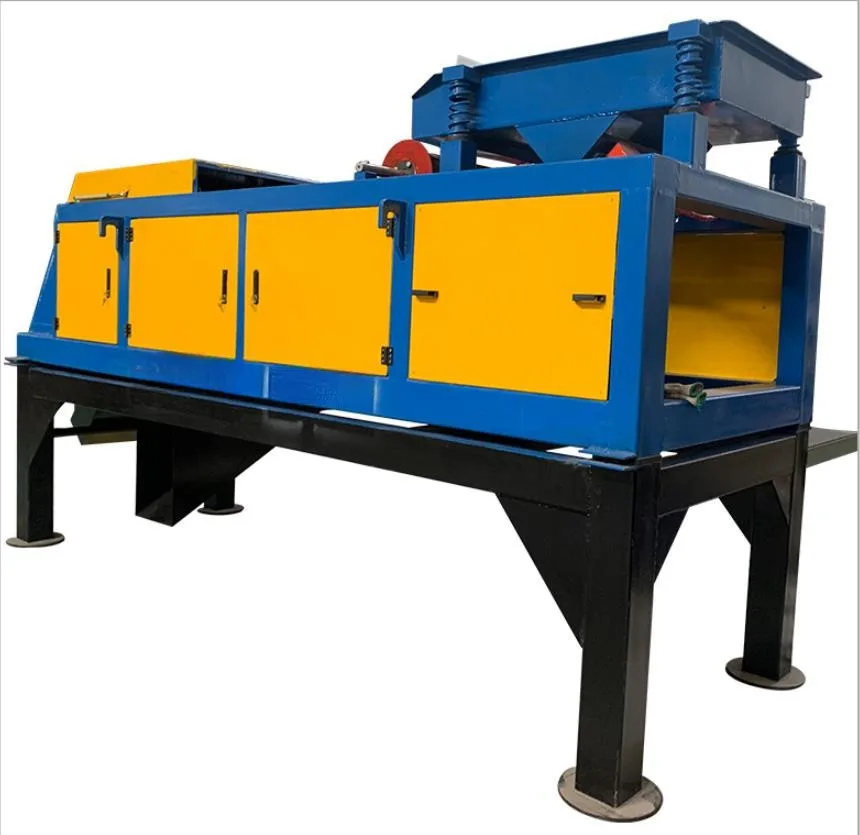Permanent Wave Magnetized Separator Vs. Eddy Flow Extractor: Key Differences Uses

When it comes to separating unwanted materials from a variety of substances, industries often turn to attractable and eddy flow separators. These machines are obligatory in recycling, minelaying, waste management, and many other sectors. While both separators partake the common goal of stuff separation, they operate based on different principles and are proper to distinguishable applications. This clause explores the key differences between Permanent Magnetic Separators(PMS) and Eddy Current Separators(ECS), their operative mechanisms, and the types of materials they are best suitable for.
Understanding Permanent Magnetic Separators(PMS)
A Permanent Magnetic Separator uses a attractive feature to draw i ferric metals, such as iron and steel, from a flow of stuff. The core boast of these separators is the use of a perm magnet to make a magnetic domain. Unlike electromagnets, perm magnets do not require an external superpowe seed to generate the magnetised domain.
How It Works:
- The stuff flow passes through the magnetic orbit generated by the permanent attractor.
- Ferrous materials are attracted to the attraction, while non-ferrous materials are allowed to pass through.
- Once the metallic element stuff sticks to the attractive feature, it is removed from the flow, typically via a physical science system like a belt or drum.
Common Applications of PMS:
- Recycling: PMS is widely used in the recycling manufacture to split ferric materials from mixed waste, including plastics and wallpaper.
- Mining: It is used in the minelaying manufacture to split ferrous metals from unsmooth ore.
- Food Processing: In the food manufacture, PMS can help remove metallic element contaminants from bulk food products.
Understanding Eddy Current Separators(ECS)
Eddy Current Separators, on the other hand, work on a wholly different principle. They apply the natural philosophy of iatrogenic electric automobile currents to part non-ferrous metals from a stuff well out. The separator uses a rotating drum with a magnetized area to make an electric stream in the material being processed.
How It Works:
- ECS operates by inducing an electric car stream in non-ferrous metals like atomic number 13, , and memorial tablet as they pass over a rotating magnetized drum.
- The magnetized field causes the evoked currents(known as eddy currents) to make their own attractable field, which repels non-ferrous metals away from the stuff well out.
- Non-metallic materials or metallic element metals are not stilted by the eddy flow and continue in the flow, while non-ferrous metals are ejected by the squeeze of the standoff.
Common Applications of ECS:
- Recycling: ECS is extensively used to split Al and other non-ferrous metals from waste streams such as integrated plastics, electronics, and metals.
- Waste Management: It is ordinarily used in separating aluminium cans, wires, and other non-ferrous materials in assemblage and industrial waste recycling.
- Electronics Recycling: ECS is nonsuch for separating worthful non-ferrous metals from physics run off like boards.
Key Differences Between Permanent Magnetic Separators and Eddy Current Separators
-
Operating Principle:
- PMS operates using a atmospherics magnetised area generated by a permanent magnet to attract ferric metals.
- ECS uses a rotating magnetized sphere to induce eddy currents in non-ferrous metals, causing them to be repelled away from the stuff flow.
-
Types of Materials Separated:
- PMS is designed to split metallic element metals like iron and steel.
- ECS is specifically used to split non-ferrous metals like atomic number 13, copper, and plaque.
-
Magnetic Field Source:
- PMS uses a permanent attraction, which does not want power to go.
- ECS uses a rotating drum with a high-frequency alternate flow to return its magnetic orbit.
-
Applications:
- PMS is best suitable for industries needing to transfer ferric contamination, such as recycling, mining, and food processing.
- ECS is nonsuch for applications requiring the separation of non-ferrous metals, such as Al, in recycling, run off management, and recovery.
-
Energy Efficiency:
- PMS is more energy-efficient as it doesn’t require for generating the magnetised field, qualification it a cost-effective root for ferric metal legal separation.
- ECS requires an electrical ply to yield its rotating magnetized field and thus uses more vim than PMS.
-
Maintenance:
- PMS generally requires less sustainment due to the simple mindedness of the permanent attracter, which doesn't wear out or need superpowe provide.
- ECS requires more sustainment, particularly in the rotating components, and its physical phenomenon components can degrade over time.
Choosing the Right Separator: Which One Should You Use?
The between a Permanent Magnetic Separator and an Eddy Current Separator for the most part depends on the type of materials you need to separate and the specific requirements of your surgical procedure.
-
Use a Permanent Magnetic Separator when:
- You need to remove ferrous metals from a material stream.
- You need an vim-efficient root for ferric material legal separation.
- Your surgery involves recycling, mining, or food processing.
-
Use an Eddy Current Separator when:
- You need to recover non-ferrous metals like aluminum, , or memorial tablet.
- Your work involves recycling of interracial metals or run off materials, such as in the gathering solid state run off industry.
- You are involved in or Al can recycling.
Conclusion
While both Permanent Mineral Processing Equipment Solutions and Eddy Current Separators play crucial roles in material legal separation across various industries, their differences in operative principles, vim employment, and stuff handling make them suited for different applications. By understanding their key characteristics and the materials they best handle, industries can take the extractor that best meets their needs for efficiency, cost-effectiveness, and state of affairs sustainability.
